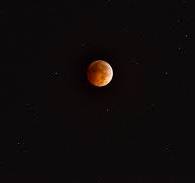Astrophotography
Here are some essential tech tips for astrophotography to help you capture stunning images of the night sky:
Preparation and Gear
Choose the Right Location: Select a spot with minimal light pollution, preferably during a new moon or when the moon is below the horizon for darker skies.
Use a Sturdy Tripod: A stable tripod is critical for long exposures, ensuring your camera remains completely still.
Consider Additional Accessories:
A remote shutter release or intervalometer to avoid camera shake and automate long exposures.
A star tracker mount to compensate for Earth's rotation, allowing longer exposures without star trails.
Camera Settings
Manual Mode: Always shoot in manual mode to control aperture, ISO, and exposure time. Autofocus is unreliable in low light, so use manual focus instead.
Wide Aperture: Use a fast lens with an aperture of f/2.8f/2.8–f/4f/4 to capture more light.
ISO Settings: Start with ISO 400–1600 and adjust based on your camera's noise performance. Advanced cameras can handle ISO 3200–6400 with noise reduction.
Exposure Time: Use exposure lengths of 15–30 seconds for stationary shots. Longer exposures may require a star tracker to avoid trails.
Shoot in RAW: RAW format preserves more detail and allows greater flexibility in post-processing.
Focusing Techniques
Use live view on your camera's screen to zoom in and manually focus until stars appear sharp. Simply setting the lens to infinity may not be precise enough.


More Tips
Framing and Composition
Apply the "rule of thirds" by framing your image with one-third horizon and two-thirds sky. Use apps like PhotoPills or a star map to plan your composition and locate celestial objects like the Milky Way.
Post-Processing Preparation
Take calibration frames (dark, flat, and bias frames) to reduce noise and improve image quality during post-processing.
Use built-in noise reduction settings if you're just starting out, though this will double your exposure time as the camera takes a dark frame for noise subtraction.
Practical Tips
Check weather forecasts and plan around clear skies. Avoid nights with heavy moonlight unless it’s part of your composition.
Experiment with settings to find what works best for your specific conditions and equipment.